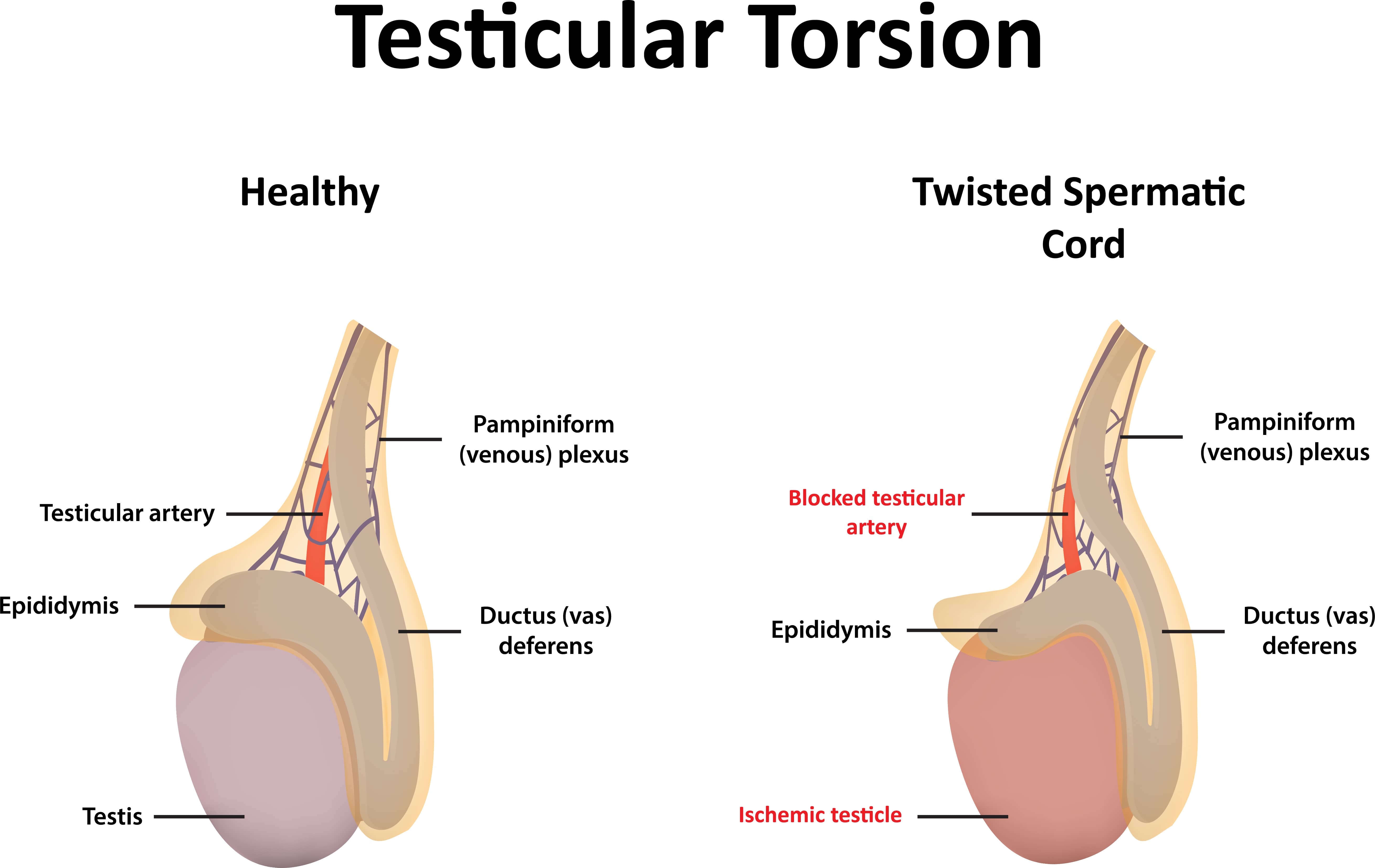 Torsion testis
Torsion testis Testicular torsion is a surgical emergency that may result in the loss of the affected testicle if not treated promptly. This is a painful condition caused by the twisting of the spermatic cord, which causes a loss of blood flow to the testicle. Testicular tissue cannot survive without blood flow. Torsion is the most common cause of testicle loss in adolescent males.
The cause of the majority of cases is the bell clapper deformity, an anatomic abnormality that is present in around 12% of males. This anatomical condition allows the spermatic cord to twist more easily, resulting in compromise of the blood supply to the testicle. This can occur spontaneously or may be associated with trauma. There is no way to detect this deformity. In about 40% of men who have this anatomical abnormality, it is present bilaterally (in both testicles).
Testicular torsion is characterized by excruciating one-sided testicular pain, with sudden swelling. Since the cord structures twist, the testicle elevates as well. Patients may have nausea and vomiting. Patients may also have abdominal pain. There may be a history of previous testicular pain. Fever may also accompany the testicular pain. Testicular torsion is seen most frequently in the 12-18-year-old age group, and most cases occur in men under 30 years of age. However, it can occur at any age, including in newborns.
The only treatment for testicular torsion is surgery. On rare occasions, a physician may be able to manually untwist the testicle, but this is not common. The importance of having testicular pain evaluated immediately cannot be overemphasized. The goal of surgery is to salvage the testicle. If the child is brought to the hospital with in 4 to 6 hours of the onset of pain, surgery is performed to derotate the chord and circulation is restored and testes might be salvaged. If the testicle cannot be salvaged, the testicle is removed (a procedure known as orchiectomy). If the testicle is detorsed successfully, it will be sutured within the scrotum so that it can no longer twist (called orchiopexy). The other testicle will also undergo the same fixation to the scrotum.

Dr Mahendra Jain is an eminent and an extremely experienced Urologist ...
Read MoreCall Us